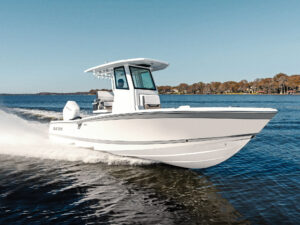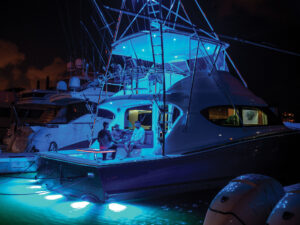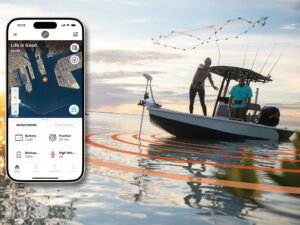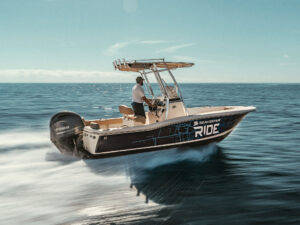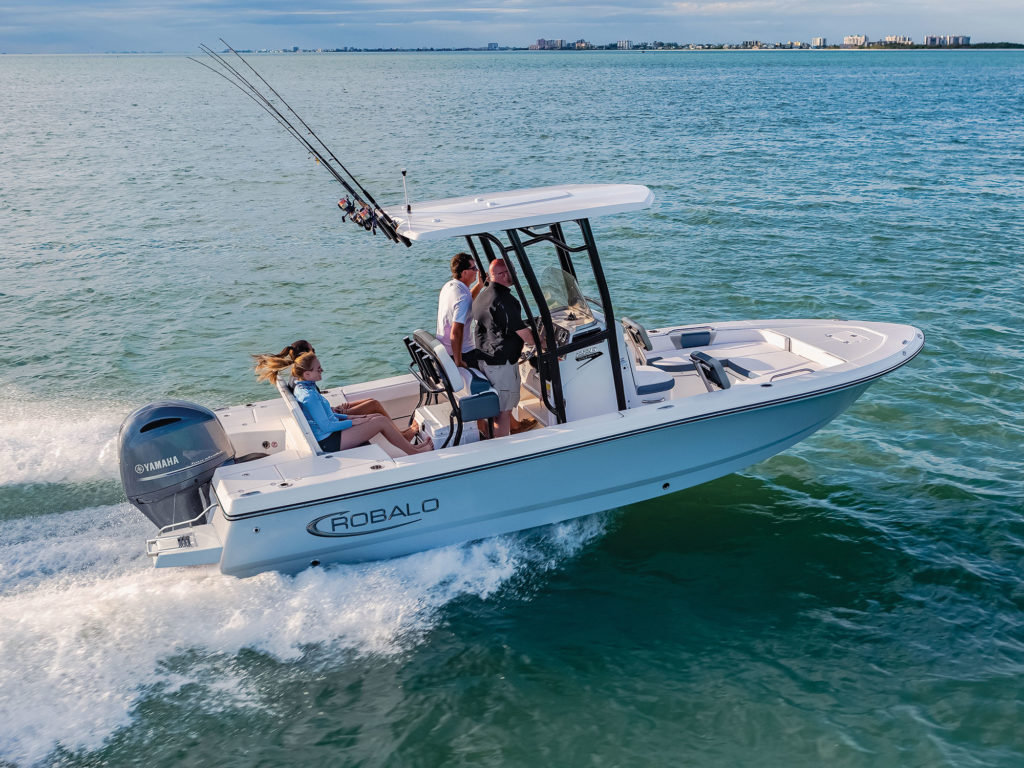
Bay boats were once considered practically anything you wouldn’t take outside the inlet. Today’s anglers expect them to be 19 to 23 feet, with a shallow deadrise of 12 to 14 degrees and a draft of under 14 inches—12 inches being ideal—and a freeboard of 18 to 22 inches at the transom.
They should be capable of varying from flats to big-water bays and inlets.
An angler might take one outside the inlet now and then, but most are used inshore and often in water as shallow as will float it. Increasingly, bay boats double as family fun boats, and owners often opt for convertible seating comforts such as forward-deck sun pads, stowable front and aft lounge seats, head compartments with fresh water for sinks and transom showers, and more.
Tip: Every rod holder, cup holder, hatch gutter and cockpit drain should be plumbed to run overboard. Some rod holders and cup holders drain to the deck, which in turn drain overboard.
Big Picture
A bay boat should have fore and aft casting platforms, much like a bass boat. That gives anglers a better casting position and better vantage point for sight-casting to fish. The aft deck often has jump seats that fold down, completing a larger deck. A step to the forward deck is essential for easy access to it. A center console is essential, and many owners deliberately omit the T-top or hardtop to make overhand casting or fly-fishing easier.
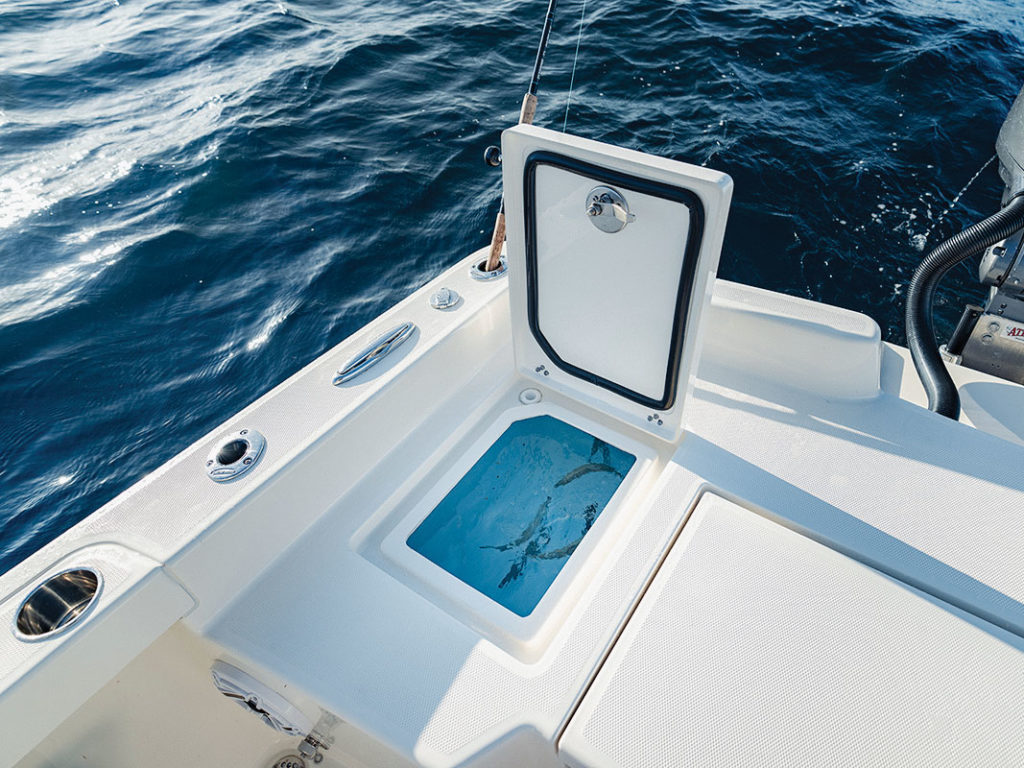
Livewells
In most of Florida, live bait is king, and hundreds of baits are carried to the fishing grounds, requiring two and sometimes three livewells. One should be just deep enough to keep a few shrimp or crabs. While live bait is growing in popularity in the mid-Atlantic states and in the Northeast, some boatbuilders targeting those buyers still make livewells optional.
Tip: Select all the livewell options available, and ensure that the wells are insulated. Then, if there’s one that you don’t need, it makes for a handy cooler—and enhances the boat’s resale value.
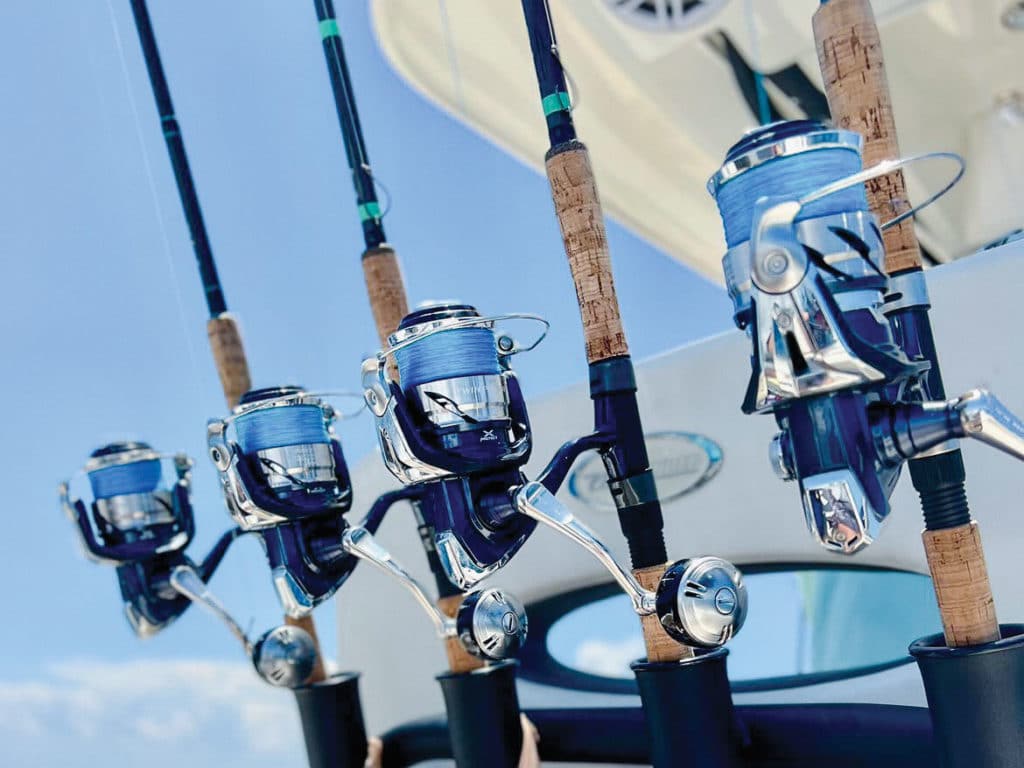
Rod Storage
The foredeck should cover one or two rod lockers with locking latches. Typically, a portside locker will have racks to hang rods, and the starboard locker is only optionally so equipped. Many have four gunwale rod holders, and standing storage on the sides of the console and the leaning post might sport four to six rocket-launcher rod holders. If you opt for a leaning post and hardtop, rocket launchers add to your quiver.
Tip: When choosing the number of rod holders, count the number of anglers you’ll usually fish with, then multiply that by three.
Horsepower
There is a mathematical equation for calculating theoretical horsepower needed to properly move a boat. By the time that boat hits the water, horsepower needs have been confirmed or refined by real-world performance. Choose the lower horsepower only when your fishing crew and gear will be limited. Choose more horsepower for better midrange handling and improved performance under full load. Manufacturers once targeted a lower price by offering a boat with too little horsepower. The practice is largely abandoned now—boaters are too savvy to be suckered by that play.
Tip: Don’t choose a smaller motor to save fuel. To achieve the same speed, you’ll run it harder, usually burning as much fuel as a larger engine at a lower throttle setting. More horsepower also means better resale or trade-in value. Further, top speed is not the most important function of horsepower. Torque is of utmost value, allowing better control at slow speeds, along with the ability to lift the boat onto plane at lower speeds. Think of top speed as a marker of performance, not the goal to achieve. A higher top speed at comparable rpm to a smaller motor will likely mean that the boat will achieve better handling characteristics at lower rpm settings than a smaller motor might. The extra torque of higher horsepower is invaluable in handling rough conditions more comfortably.
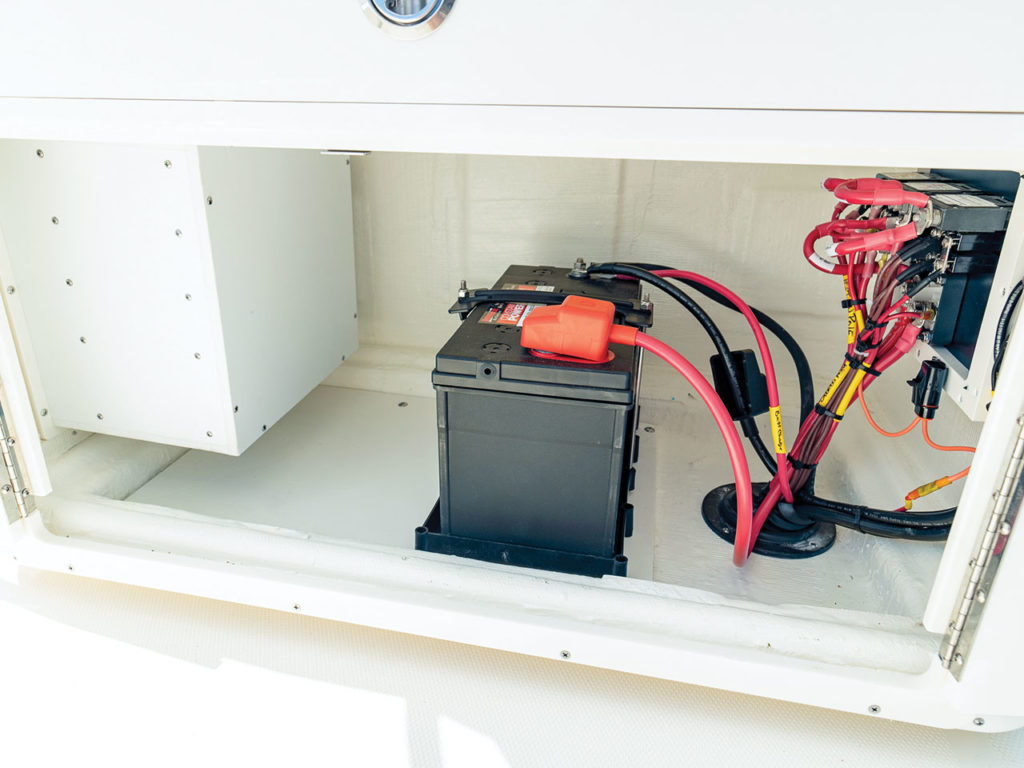
Rigging
Hydraulic Steering: Most boats under 23 feet will have hydraulic steering, not power steering. With 250 to 300 horsepower, it’s time to consider power steering. With some motors such as Mercury Verado or Yamaha XTO Offshore 425, it is standard.
Voltage: A 24-volt trolling motor will need two dedicated batteries, with a third for starting. A 36-volt motor will require three, plus one for starting.
More Voltage: If you plan to use all pumps, stereo AMP and GPS systems at once, dual starting batteries might be needed. While motor alternators are designed to give great output in the face of the greater demand of vessel systems, trying to run them through one battery might result in system overload.
Charging: Onboard chargers are a must for today’s bay boats. When you get back to the dock, plugging in one 120-volt extension cord charges trolling-motor batteries, house batteries and starting batteries. Onboard chargers such as JL Marine Charge system are designed to monitor voltage on all batteries while fishing or underway and direct alternator current to the battery banks that need it most. Emergency starting is one major advantage of the Charge, and at the touch of a button, battery power from the stronger trolling-motor bank can be transferred to the starting battery to get you going.
Electronics: The dash should be large enough to accommodate at least a 12-inch built-in GPS/sonar display and a VHF radio. Larger or more displays are getting more common. A stereo source unit on the dash is desirable too.
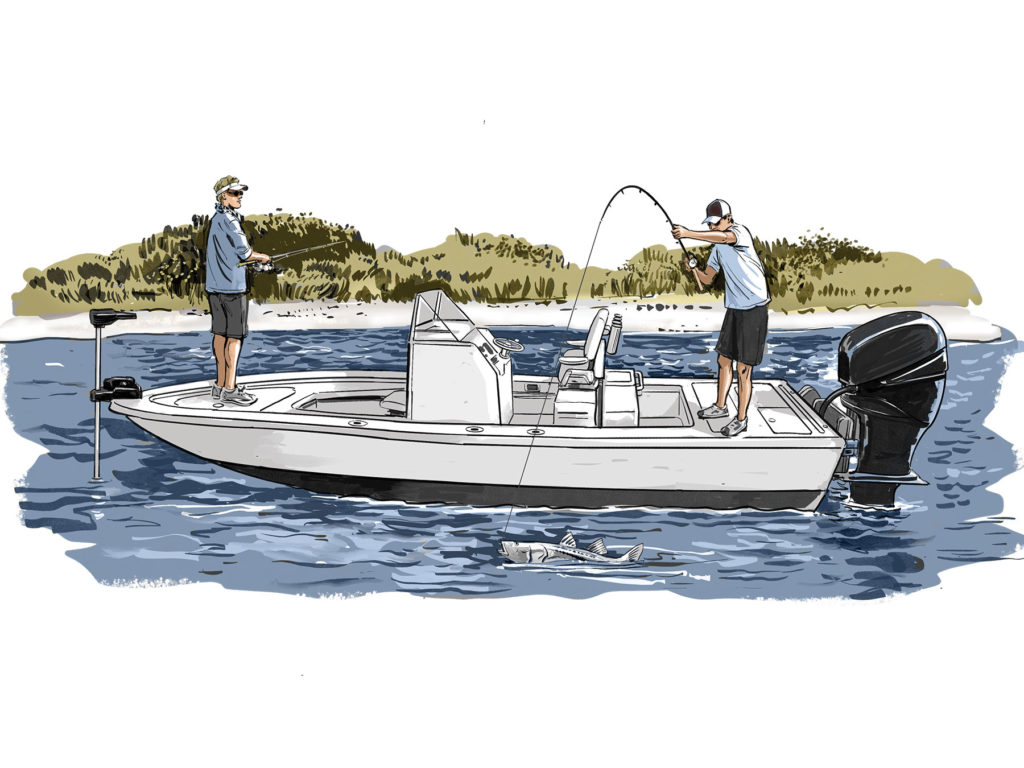
Topless or T-Top?
In the South, anglers often opt for a canvas or fiberglass T-top, the latter often called hardtop. The shade is essential. However, many serious and competitive anglers skip the expensive option in favor of open overhead space to make accurate casting a breeze. Fly-fishers in particular fish topless to avoid having to make side-arm casts or snagging the top on the backcast. Analyze your fishing style and quarry carefully before deciding whether you want the shade or free overhead casting space.
Editor Says: Convertible seating is a popular option, but unless the cushions can be easily removed and stowed or retrieved to install, you’re unlikely to use them as much as you think. Built-in (and standard) seatbacks such as those on Boston Whaler’s Dauntless series or Grady-White’s Coastal Explorers make their use easy. Optional deck seating can cost more than $2,000, so carefully consider whether you’ll use it. -Randy Vance, Editor-at-Large,Boating and Fishing Group

